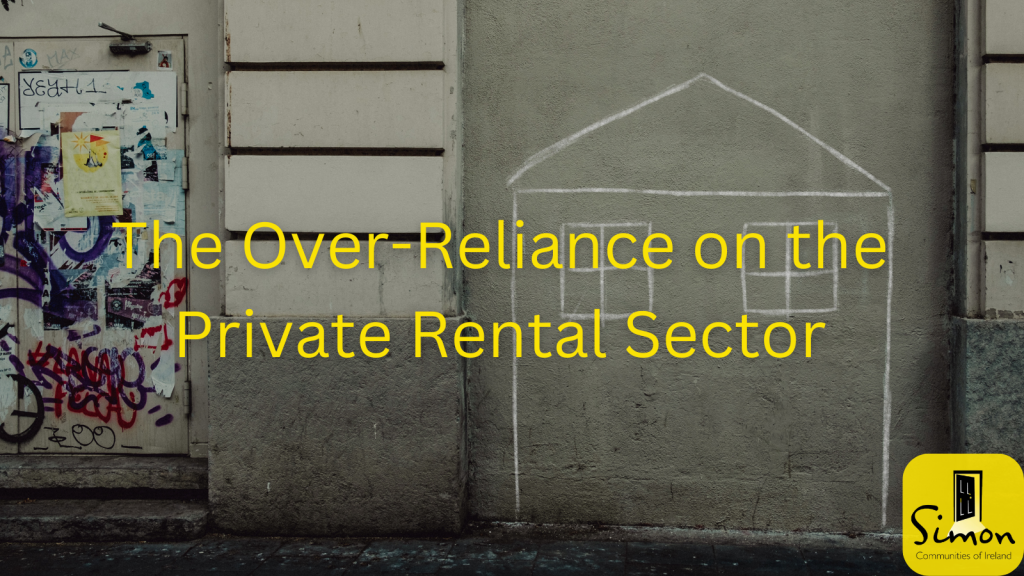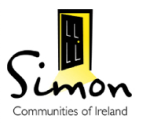Author: Rebecca Hamilton

This is the final blog out of a series which explores (i) eviction notices and the effectiveness of the moratorium on evictions, (ii) the lack of alternative housing available for households issued with eviction notices, and (iii) the over-reliance on the private rental market.
Simon Communities of Ireland believe that adequate and secure public housing should be available for those who cannot comfortably afford private market housing. In recent times, there has been an over-reliance on the private market to provide social housing. Through the use of schemes such as the Housing Assistance Payment (HAP) and the Rental Accommodation Scheme (RAS), individuals and families who qualify for social housing have been left vulnerable to the insecurity and unaffordability which characterises the private rental market in Ireland. This is leaving households unable to set down routes in an area, as they are constantly on the move from one rental property to another. In addition, households are often left paying significant ‘top-ups’ to their landlords, as it is almost impossible to find a property where the cost of renting is covered by HAP alone. This was highlighted in Simon Communities of Ireland’s latest Locked Out of the Market report, which found just 33 Properties available for rent within discretionary HAP limits nationwide. In addition, recently published RTB research shows that the proportion of renters in receipt of rental assistance who pay top-ups to their landlords has increased from 66% in 2019/2020 to 88% in 2022/2023. The average cost of the top-up payment has also increased, from €255.88 to €284.88 over the same period.
The previous blog noted how supply in the private rental sector (PRS) has become increasingly squeezed over the last number of years. This is having a significant impact on homelessness, as households who receive eviction notices are faced with a lack of alternatives.
The Increased Reliance on the Private Rental Sector
The introduction of HAP represents the increased role of the PRS to provide social housing to eligible households. HAP was first piloted in 2014 and has significantly increased its scale since. As of Q2 2023, there were over 58,000 active HAP tenancies (see table below). Although it is welcome that these households have their housing need met through HAP and the PRS, it is important to note that living in the PRS leaves these households more vulnerable to insecurity of tenure and affordability issues than households living in more traditional forms of social housing (Local Authority and Approved Housing Body lettings). Therefore, many make the case that HAP should be deemed as a short-term solution rather than a long-term one, unless tenant rights are improved and grounds for eviction are more restricted. Currently, once a household secures a property through HAP, they are considered to have their housing need met and are therefore removed from the social housing waiting list
Shortfalls: HAP Payments and Supply
The level of HAP payment received by households varies depending on household composition and rates vary across Local Authorities. In addition to the standard rate, households can avail of discretionary rates which can be up to an additional 50% of the standard rate in Dublin, and up to an additional 35% of the standard rate elsewhere. As mentioned throughout this blog series, there has been a contraction in the private rental supply, an increase in rental prices and an overall lack of affordability. The latest Locked Out of the Market report found just 3% of all properties available to rent examined in the study are available through HAP. In 2021, on average, 27% of all properties were available through HAP. Of the 33 properties available through HAP, just two properties were available within standard HAP limits. 25 (76%) of the total 33 HAP properties were available to rent in Dublin, where the discretionary rate allows an additional 50% on the standard rate. In 9 of the 16 study areas, there were no properties available to rent through HAP in any household category within standard or discretionary limits. As mentioned previously, due to the lack of properties available within HAP limits, households are increasingly left paying unaffordable top-ups to their landlords.
We are now in a situation where neither the standard HAP rate alone nor the discretionary rate align with market rents across 97% of the country. This highlights how the uncertain and volatile private rental market should not be relied upon to provide social housing. Our over-reliance on the private rental market is leaving individuals and families vulnerable to homelessness.
Solutions
Previous blogs in this series explored eviction notices and the lack of alternatives in the private rental market. The number of households presenting as homeless due to receiving eviction notices is increasing, and less and less people are exiting or being prevented from becoming homeless through the private rental market. Although exits from homelessness through Local Authority and AHB lets are rising, the rise is not significant enough to make up for the loss of private rental sector (HAP) lets. Therefore, Simon Communities of Ireland recommend that the allocation of Local Authority homes to those experiencing homelessness is increased further. In addition, social housing output needs to increase to at least 15,000 homes per year in order to keep pace with current demand. This additional supply of social homes would take pressure off the private rental sector, enabling a more sustainable and affordable housing system. Our Locked Out of the Market reports clearly demonstrate the inadequacy of the current HAP limits nationwide. In order to increase exits from homelessness through the PRS, it is apparent that HAP rates need to increase to keep pace with current market rents. This measure, in conjunction with an increased allocation of Local Authority homes for people experiencing homelessness would help bridge the gap while new social housing is being built. It is important that HAP tenants can not only access a home on the private rental market, but they have increased protection from homelessness. Therefore, Simon Communities of Ireland have put forward the proposed ‘Simon Homeless Prevention Bill’ and we continue to advocate for its implementation. Finally, another area that need to see progress is initiatives to tackle vacancy and dereliction across the country, bringing much needed properties back into use.


